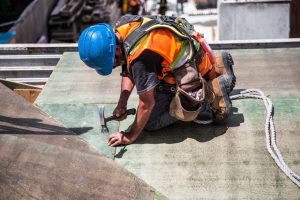Cranes are a big part of engineering and they are essential for different industries like manufacturing, warehousing, construction and more. When it comes to operating a crane, it takes in-depth training and knowledge of the set standards to ensure those in the surrounding area are safe along with the crane driver themselves. Crane safety is a very important part of workplace safety and doing it the correct way can mean the difference between life and death.
Crane safety procedures within the workplace
Having a detailed safety program for crane operators in the workplace is important for all workplaces where cranes will be used. This will need to include crane-related hazards and shows ways to eliminate common hazards. It should also outline how to respond and deal with a situation in the case of an accident or emergency. Workplace safety is always important, but crane safety is critical because it can cause such devastating accidents.
Common Crane Hazards
Crane operators and others that are working around the work site need to know the common crane hazards. Being aware of the risks will ensure that everyone knows how to identify them and understand how to avoid them.
PPE for Crane Safety
Identifying and eliminating the hazards that are related to cranes is important and it matters how much effort you put it into it. To ensure that employees are protected shall a problem occur, having the right personal protective equipment (PPE) for those that are operating and working around cranes is imperative. These are the basic requirements for PPE in crane work but you may need extra equipment, which will depend on the situation.
Hard hats
Everyone who is working on a construction site, especially around cranes, needs to be wearing a hard hat all the time. You cannot predict when something will happen or when something will fall from a crane. Did you know even small objects that fall on your head can cause serious head injuries?

Eye protection
The crane operators will need to be able to see what they are doing at all times. When you are working in an environment where there is dust or dirt you must wear eye protection to avoid irritating the eyes and causing vision problems. Operators of the largest cranes or smallest cranes all need to be able to clearly see what they are doing in order to prevent serious accidents.
Hand protection
When you are loading and unloading cranes you must keep your hands safe from them being crushed or from harsh pinches. Wearing protective gloves can reduce this hazard.
When you are looking at the different hazards that are associated with cranes and the different loads that cranes can carry, you will need to decide what the correct PPE equipment is for that particular situation. Each load and each job site will require different equipment and you must make yourself aware of what is needed before going on the site.
Crane Safety Training
Crane operators will need to:
Offer all employees who work with cranes extra training. It is important in order to lower the risks that come with this type of work equipment. The training will be required to be carried out before the operation of the crane takes place. This is for the operator’s safety and for those around the site.
The training needs to be customised to match the different types of cranes that are being used in that workplace. The information needs to be published clearly for everyone to understand and refer back to it if needed.
